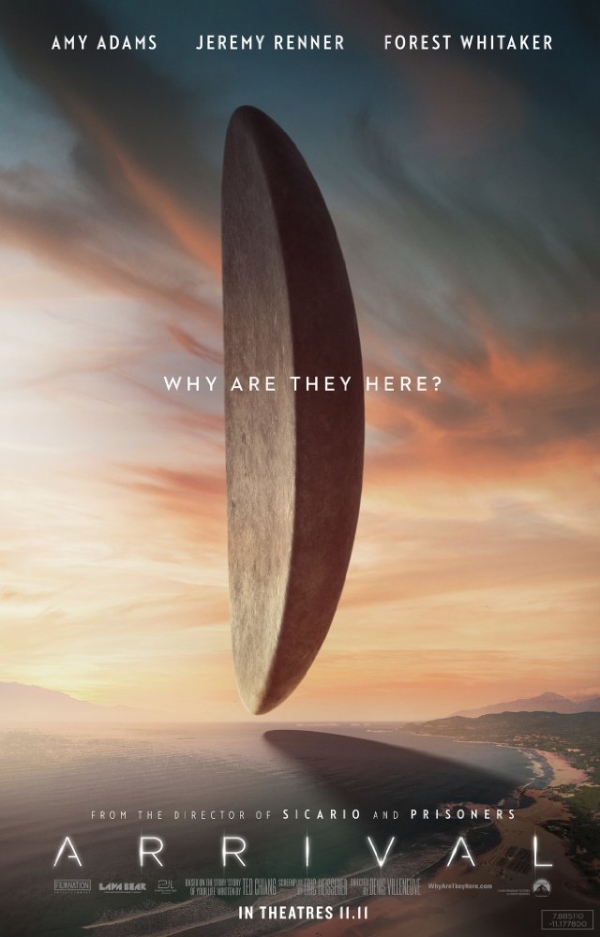
Arrival (2016) is a film adaptation of Ted Chiang’s award-winning novella The Story of Your Life (1998), showcasing the story of a linguist Dr. Louise Banks, who tries to understand the language and text of an alien species.
Plot
Dr. Banks is a linguistics professor, leading a normal life only to be interrupted by vivid flashbacks of her late daughter. Banks’ monotonous life is upended when the “shells” arrive. Twelve mysterious alien vessels nicknamed “shells” have appeared in 12 seemingly random locations around the world. Nobody knows where they are from and who has sent them. The world descends into panic, as people riot out of fear, demanding answers. As the leading linguist, Dr. Banks is recruited as a translator for the government, and is transported to Montana, where one of the extraterrestrial crafts has landed.
Louise works with Ian Connelly, an astrophysicist from Los Alamos, to attempt to comprehend the alien’s language and inquire about their purpose for visiting Earth. Banks and Connelly venture into the alien machinery which opens at regular intervals. Inside this vessel, they must meet the foreign beings and make sense of their arrival.
Themes
This film is a prime example of Lovecraftian “otherness”, in the sense that the extraterrestrial beings are not distinctly humanoid figures with varied skin tones, but hulking masses supported by a radial distribution of tentacles. The technology and language of the aliens also support the theme of cosmic horror within the movie, as they are unlike anything we have experienced, such as the non-Euclidean geometry inside the spaceship and the aliens’ strange communication methods. Cosmic horror usually results in the pessimistic worldview that humans are nothing but a speck in the colossal universe, but this movie gives a more hopeful outlook, displaying human collaboration and amelioration as the key to overcoming hardships.
A recurring motif in the film is the concept of non-linear time flow, and the visual representation of a circle. While humans perceive time as an arrow of time, a one-way progression into the future, the aliens sense multiple time frames at once, as they are beings of a higher dimension. This disparity can be observed in the writing systems, where humans write in one direction, comprehending the sentence as they progress along the characters, but the aliens write in a circular system of symbols, displaying all meaning of a sentence in one large “character”.
Humans and aliens in this film have a different perspective of the world, which Arrival claims is derived from the inherent difference in language systems. The Sapir-Whorf hypothesis claims that the structure of a language can shape the cognitive process. For example, Whorf found that the Hopi tribe had a language that did not distinguish time into distinct countable frames, such as “five days”, or “one year”. They had no apparent apparatus to indicate time as a continuum or as distinct chunks, and Whorf claimed this influenced the Hopis’ worldview and behavior. While this kind of linguistic determinism has fallen out of favor in academia since the 1960s, Arrival fully endorses this concept. By fully immersing into the alien language, Dr. Banks is able to perceive time in a non-linear way like the aliens, and this acts as a major plot point within the movie.
Opinion
Overall, Arrival is a polished movie with a beautiful soundtrack and splendid visuals. It is one of the few mature science-fiction movies that gives a more intellectual approach to first contact and gives much food for thought on the consequences of human communication and collaboration.


